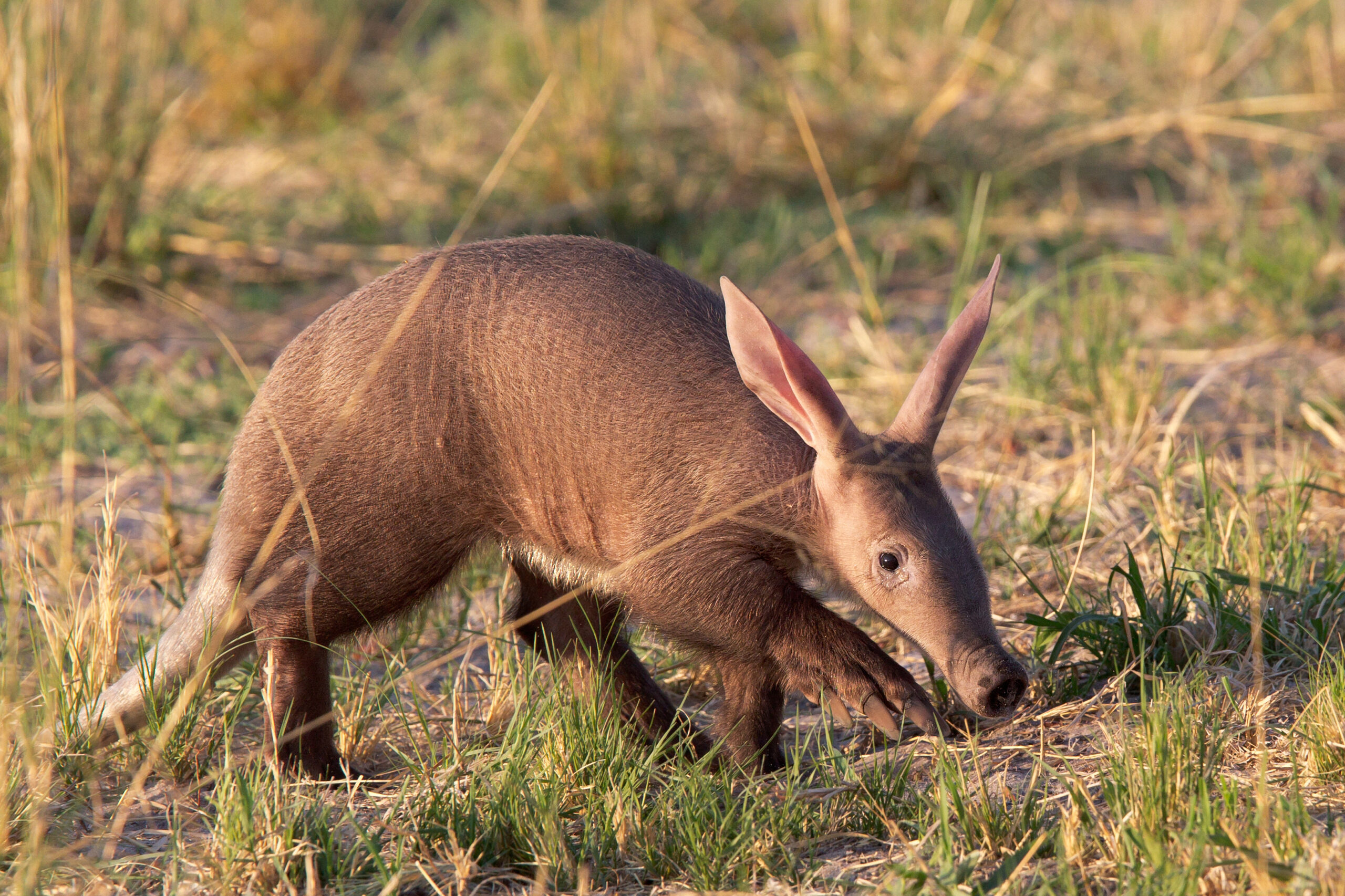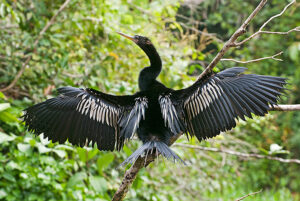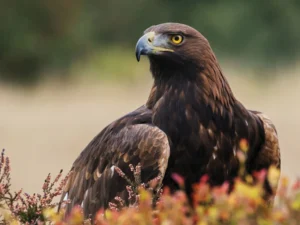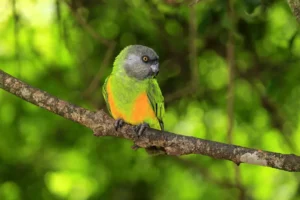Let me introduce you to the Aardvark, one of Africa’s most intriguing animals. With its distinctive long snout, sizable ears, and robust claws, the aardvark is expertly equipped for a life spent digging and searching for food under the cover of night. While it might resemble a pig in appearance, this unique creature is actually in a category all its own!
Appearance and Behavior
The Aardvark boasts a sturdy, muscular frame draped in coarse, grayish-brown fur, shielding it from the harsh sun and pesky insects. Those large ears assist it in sensing danger as well as finding its prey, while its snout and tongue are engineered for sniffing out and devouring ants and termites.
Being mostly nocturnal, the aardvark comes alive once the sun sets. During daylight hours, it takes refuge in deep burrows that it digs with its powerful claws. These burrows can stretch up to an impressive 10 meters (33 feet) long!
These creatures are solitary by nature, roaming the African savannas and grasslands at night, all in search of their next meal.
Habitat
You can find Aardvarks scattered throughout sub-Saharan Africa, thriving in areas rich with ants, termites, and soft soil ideal for digging. They favor grasslands, savannas, and open woodlands, steering clear of rocky or overly dry spots where digging poses a challenge.
Interestingly, their burrows not only serve as homes but also become sanctuaries for other wildlife, such as warthogs, hyenas, and porcupines once the Aardvark has moved out, making them crucial for the ecosystem.
Diet and Feeding Habits
What does the Aardvark love to eat? Termites and ants, of course! It relies on its sharp sense of smell to pinpoint termite mounds and ant hills, using its strong claws to break open the hard ground. Then, armed with its long, sticky tongue which can extend up to 30 cm (12 inches) it swiftly gathers thousands of insects in no time.
An adult Aardvark can devour as many as 50,000 insects in a single night, solidifying its role as a natural pest controller!
Reproduction and Life Cycle
Typically, Aardvarks breed once each year, with the female giving birth to a single cub after a 7-month gestation period. Born hairless, the young cub stays in the burrow for around 2 weeks before making its first foray outside.
By the time it reaches six months, the cub is capable of digging and foraging on its own, although it tends to remain close to its mother until the next mating season rolls around.
Fun Facts
The name “Aardvark” hails from Afrikaans, literally meaning “earth pig.”
Those impressive ears can grow to be as long as 24 cm (9.5 inches)!
Even though it munches mainly on insects, it doesn’t share a family tree with anteaters or armadillos; it stands alone in the order Tubulidentata.
When threatened, Aardvarks can sprint at speeds of up to 40 km/h (25 mph).
Once their burrows are vacated, other animal species can find refuge in the elaborate tunnels.
Conservation Status
As for its conservation status, the Aardvark is currently classified as Least Concern by the IUCN, which means it isn’t in danger. However, issues like habitat destruction, climate change, and hunting in certain areas could impact its populations down the line.
Conclusion
The Aardvark, while often regarded as peculiar, is essential to the ecosystem of Africa. This reclusive, night-active burrower not only helps aerate the soil through its tunnels but also keeps insect populations in check. It’s a reminder that every creature, no matter how unusual, plays a crucial role in maintaining the delicate balance of nature.









